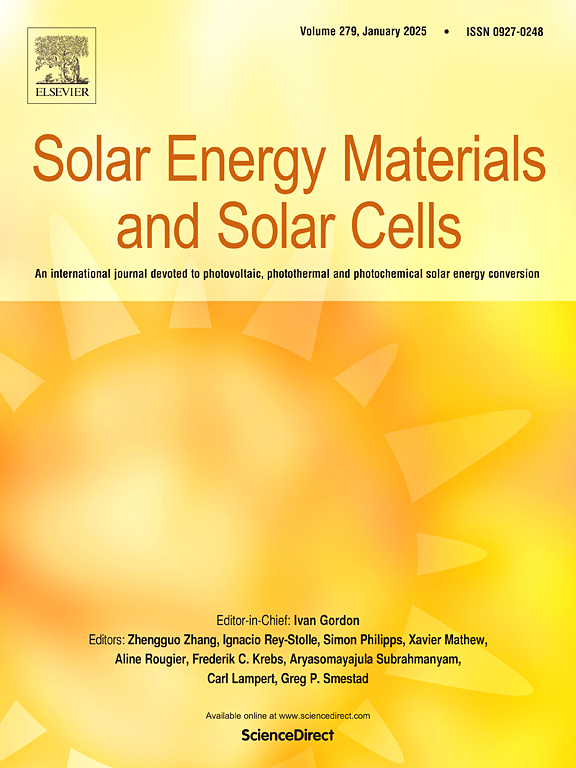IF 6.3
2区 材料科学
Q2 ENERGY & FUELS
引用次数: 0
摘要
在这项工作中,我们通过数值模拟研究了 n 型 TOPCon 太阳能电池的电流-电压特性,重点是引入一种新的离散化方法,改进隧道概率的数值计算,并分析超薄氧化层内固定正电荷对器件性能的影响。数值结果表明,所提出的改进型 Scharfetter-Gummel 方法在重掺杂区域实现了更高的计算精度和稳定性,有效减少了低电流条件下的误差。此外,对称转移矩阵法还扩展到计算穿过超薄氧化层的隧道概率,确保了模拟电流密度的高精度和计算效率。此外,对于较厚的氧化层,在不增加重组的情况下,超薄氧化层中较高的固定正电荷浓度会增强电子隧穿,从而直接提高光电转换效率。这项研究为 TOPCon 太阳能电池和半导体器件的精确建模和优化提供了理论见解和方法指导,特别是那些具有相对较高比例的重掺杂区和超薄隧道层的器件。本文章由计算机程序翻译,如有差异,请以英文原文为准。
An improved electrical model for accurate and efficient simulation of TOPCon solar cells
In this work, we investigate the current–voltage characteristics of n-type TOPCon solar cells through numerical simulations, with a focus on introducing a novel discretization method, improving the numerical calculation of tunneling probabilities, and analyzing the impact of fixed positive charges within the ultrathin oxide layer on device performance. The numerical results demonstrate that the proposed improved Scharfetter–Gummel method achieves higher computational accuracy and stability in heavily doped regions, effectively reducing errors under low-current conditions. Additionally, the symmetrized transfer matrix method is extended to calculate tunneling probabilities through ultrathin oxide layers, ensuring both high accuracy and computational efficiency in the simulated current density. Furthermore, for thicker oxide layers, without increased recombination, higher fixed positive charge concentrations in the ultrathin oxide layer enhance electron tunneling, directly improving photoelectric conversion efficiency. This research provides theoretical insights and methodological guidance for the precise modeling and optimization of TOPCon solar cells and semiconductor devices, particularly those featuring a relatively high proportion of heavily doped regions and ultrathin tunneling layers.
求助全文
通过发布文献求助,成功后即可免费获取论文全文。
去求助
来源期刊

Solar Energy Materials and Solar Cells
工程技术-材料科学:综合
CiteScore
12.60
自引率
11.60%
发文量
513
审稿时长
47 days
期刊介绍:
Solar Energy Materials & Solar Cells is intended as a vehicle for the dissemination of research results on materials science and technology related to photovoltaic, photothermal and photoelectrochemical solar energy conversion. Materials science is taken in the broadest possible sense and encompasses physics, chemistry, optics, materials fabrication and analysis for all types of materials.
 求助内容:
求助内容: 应助结果提醒方式:
应助结果提醒方式:


